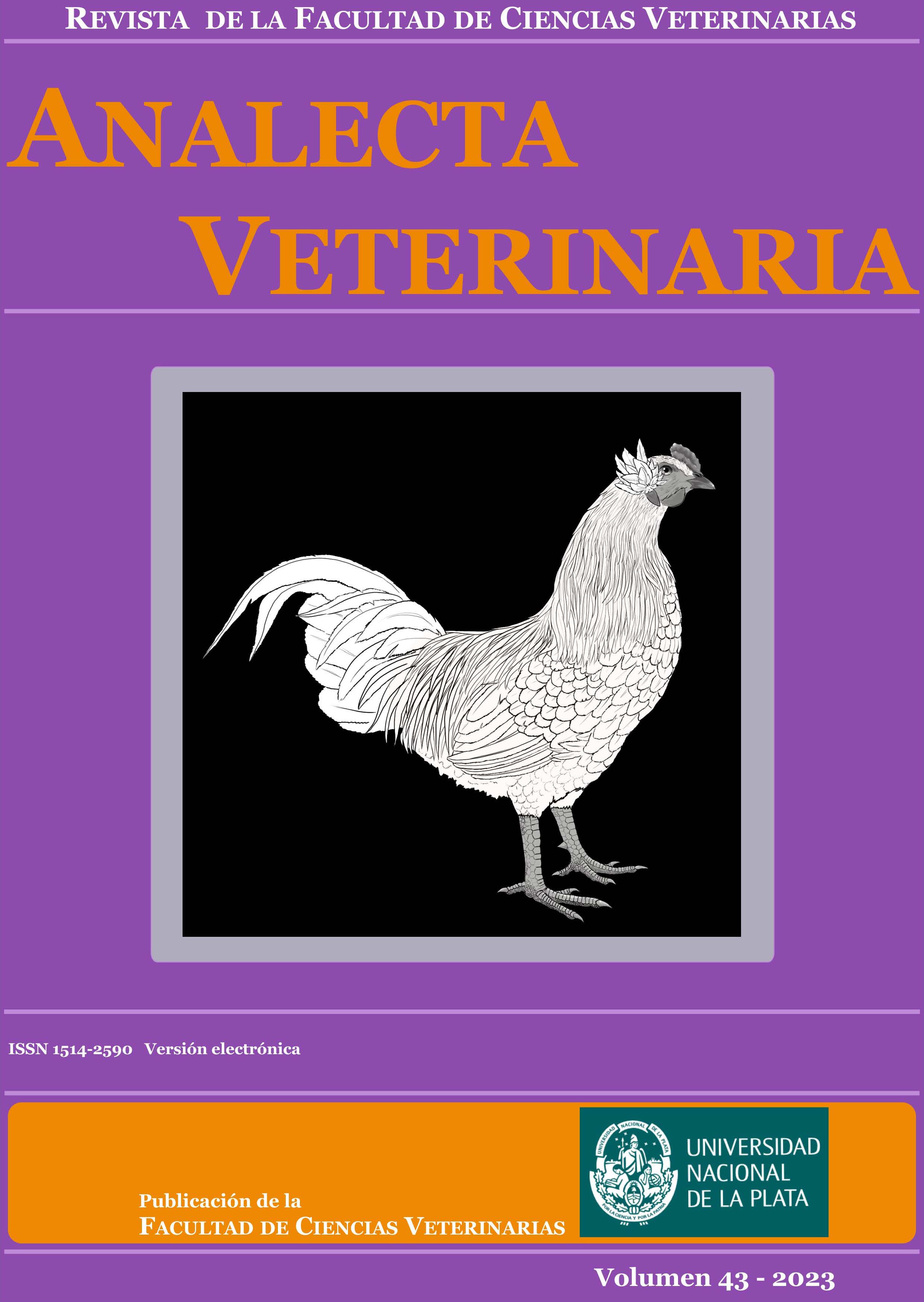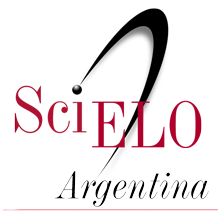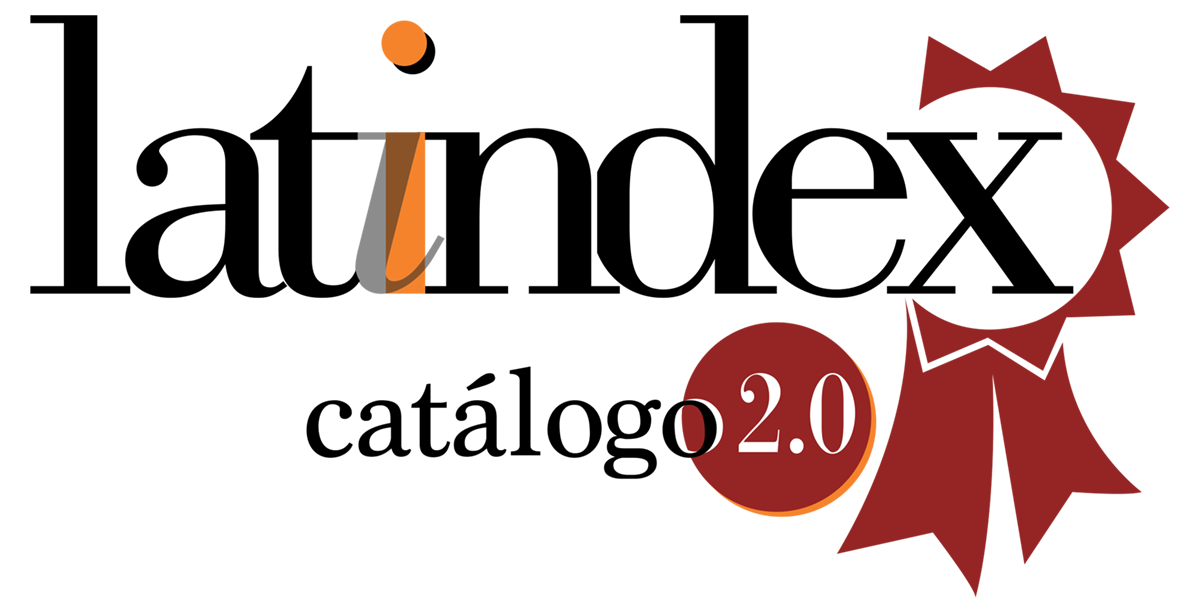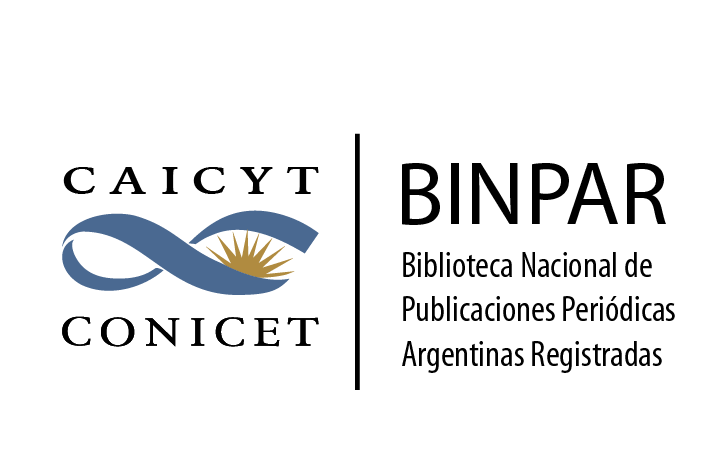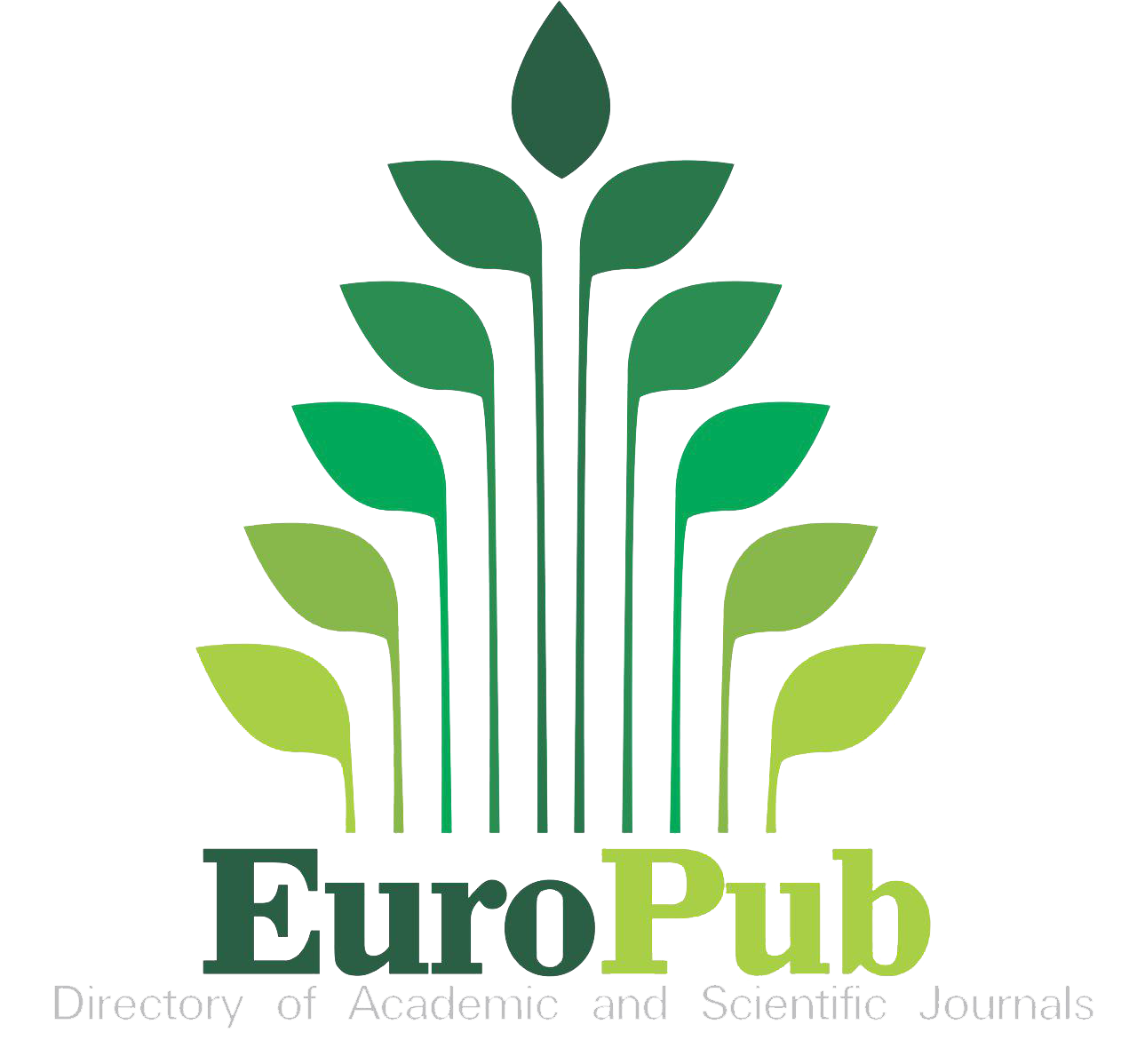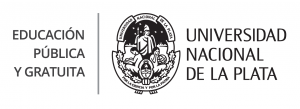Detection and isolation of Shiga toxin-producing Escherichia coli and microbial population counts on Argentinean Kosher beef for export to Israel
DOI :
https://doi.org/10.24215/15142590e071Mots-clés :
STEC, microbial counts, Beef, Kosher, abattoirRésumé
The aim of this study was to provide data on the frequency of Top 7 Shiga toxin-producing Escherichia coli (STEC) and microbial population counts on processed beef from Argentinean Kosher cattle abattoirs authorized to export to Israel. A total of 480 samples (forequarters, primal cuts, trimmings) were taken and analyzed for Top 7 STEC detection and isolation and for mesophilic aerobic organism, coliform and E. coli enumeration. Differences in stx detection and microbial population counts on forequarter samples before and after salting were not statistically significant (P >0.05). All samples were negative for Top 7 STEC. Differences were significant for all microbial counts in primal cuts (P <0.001). Neck samples showed a higher level of contamination with the three groups of microorganisms than fore shank and brisket samples. The prevalence of stx was lower than that reported worldwide and in Argentinean export abattoirs. Salting did not significantly reduce the microbial load on forequarters.
Téléchargements
Statistiques
Références
Alfandary H, Rinatt C, Guerevich E, Eisenstein I, Golberg O, Kropach N, Landau D. 2020. Hemolytic uremic syndrome: A contemporary pediatric experience. Nephron. 144(3):109-17. https://doi.org/10.1159/000505401
Baeza Quiroz CB. 2013. Aislamiento y caracterización de cepas de Escherichia coli productor de shigatoxina desde carne de vacuno nacional e importada, distribuida en los principales supermercados de la provincia de Santiago. Trabajo de Tesis para optar al grado de Magíster en Salud Pública y Sistemas de Salud. Facultad de Medicina, Escuela de Salud pública, Universidad Mayor, Santiago, Chile. https://1library.co/document/ye9e2req-aislamiento-caracterizacion-escherichia-productor-shigatoxina-distribuida-principales-supermercados.html
Barkocy-Gallagher GA, Arthur TM, Rivera-Betancourt M, Nou X, Shackelford SD, Wheeler TL, Koohmaraie M. 2003. Seasonal prevalence of Shiga toxin producing Escherichia coli, Including O157:H7 and non-O157 serotypes, and Salmonella in commercial beef processing plants. Journal of Food Protection. 66(11):1978-86. https://doi.org/10.4315/0362-028X-66.11.1978
Bohaychuk VM, Gensler GE, Romero Barrios P. 2011. Microbiological baseline study of beef and pork carcasses from provincially inspected abattoirs in Alberta, Canada. Canadian Veterinary Journal. 52,1095-100.
Bosilevac JM, Guerini MN, Brichta-Harhay DM, Arthur TM, Koohmaraie M. 2007. Microbiological Characterization of imported and domestic boneless beef trim used for ground beef. Journal of Food Protection. 70(2):440-9. https://doi.org/10.4315/0362-028X-70.2.440
Brusa V, Restovich V, Galli L, Teitelbaum D, Signorini M, Brasesco H, Londero A, García D, Padola NL, Superno V, Sanz M, Petroli S, Costa M, Bruzzone M, Sucari A, Ferreghini M, Linares L, Suberbie G, Rodríguez HR, Leotta GA. 2017. Isolation and characterization of non-O157 Shiga toxin-producing Escherichia coli from beef carcasses, cuts and trimmings of abattoirs in Argentina. PLoS One. 12(8): e0183248. https://doi.org/10.1371/journal.pone.0183248
Brusa V, Restovich V, Signorini M, Pugin D, Galli L, Ruíz Díaz V, Arias R, Leotta GA. 2019. Evaluation of intervention measures at different stages of the production chain in Argentinian exporting abattoirs. Food Science and Technology International. 25(6):491-96. https://doi.org/10.1177/1082013219836326
Brusa V, Restovich V, Galli L, Arias R, Linares L, Costa M, Ruíz Díaz V, Pugin D, Leotta G. 2022. Reduction of Shiga toxin-producing Escherichia coli in beef abattoir. Food Science and Technology International.28(1):50-9. https://doi.org/10.1177/1082013221991258
Carney E, O'Brien SB, Sheridan JJ, McDowell DA, Blair IS, Duffy G. 2006. Prevalence and level of Escherichia coli O157 on beef trimmings, carcasses and boned head meat at a beef slaughter plant. Food Microbiology. 23(1):52-9. https://doi.org/10.1016/j.fm.2004.12.001
Cobbold RN, Davis MA, Rice DH, Szymanski M, Tarr PI, Besser TE, Hancook DD. 2008. Associations between bovine, human, and raw milk, and beef isolates of non-O157 Shiga toxigenic Escherichia coli within a restricted geographic area of the United States. Journal of Food Protection. 71,5:1023-7. https://doi.org/10.4315/0362-028X-71.5.1023
Duarte AS, Nauta M, Aabo S. 2016. Variation in the effect of carcass decontamination impacts the risk for consumers. Food Control. 59:12-9. https://doi.org/10.1016/j.foodcont.2015.05.015
EFSA & ECDC. 2018. The European Union summary report on trends and sources of zoonoses, zoonotic agents and food-borne outbreaks in 2017. EFSA Journal. 16(12):5500. https://doi.org/10.2903/j.efsa.2018.5500
Farouk MM, Al-Mazeedi HM, Sabow AB, Bekhit AED, Adeyemi KD, Sazili, AQ, Ghani A. 2014. Halal and kosher slaughter methods and meat quality: a review. Meat Science. 98 (3):505-19. https://doi.org/10.1016/j.meatsci.2014.05.021
Galli L, Brusa V, Rodríguez R, Signorini M, Oteiza JM, Leotta GA. Escherichia coli in food products. En: Torres A.G. (ed.). Escherichia coli in the Americas. Springer International Publishing AG, Cham, Switzerland, 2016.
Hajmeer MN, Marsden JL, Fung DYC, Kemp GK. 2004. Water, sodium chloride and acidified sodium chlorite effects on Escherichia coli O157:H7 and Staphylococcus aureus on beef briskets. Meat Science. 68:277-83. https://doi.org/10.1016/j.meatsci.2004.03.006
ISO/CEN 13136:2012. Microbiology of food and animal feed - Real-time polymerase chain reaction (PCR)-based method for the detection of food-borne pathogens - Horizontal method for the detection of Shiga toxin-producing Escherichia coli (STEC) and the determination of O157, O111, O26, O103 and O145 serogroups.
ISO 16649-2:2001. Microbiology of food and animal feeding stuffs - Horizontal method for the enumeration of beta-glucuronidase-
positive Escherichia coli - Part 2: Colony-count technique at 44 degrees C using 5-bromo-4-chloro-3-indolyl beta-D-glucuronide.
ISO 4832:2006(E). Microbiology of food and animal feeding stuffs - Horizontal method for the enumeration of coliforms - Colony-count technique.
ISO 4833-1:2013. Microbiology of the food chain - Horizontal method for the enumeration of microorganisms - Part 1: Colony count at 30 °C by the pour plate technique.
Masana MO, Leotta GA, Del Castillo LL, D´Astek BA, Palladino PM., Galli L, Vilacoba E, Carbonari C, Rodríguez HR, Rivas M. 2010. Prevalence, characterization, and genotypic analysis of Escherichia coli O157:H7/NM from selected beef exporting abattoirs of Argentina. Journal of Food Protection. 7(4):649-56. https://doi.org/10.4315/0362-028X-73.4.649
Masana MO, D´Astek BA, Palladino PM, Galli L, Del Castillo LL, Carbonari LL, Leotta GA, Vilacoba E, Irino K, Rivas M. 2011. Genotypic characterization of non-O157 Shiga toxin–producing Escherichia coli in beef abattoirs of Argentina. Journal of Food Protection. 74(12):2008-17. https://doi.org/10.4315/0362-028X.JFP-11-189
Nobili G, Franconieri I, La Bella G, Basanisi MG, La Salandra G. 2017. Prevalence of Verocytotoxigenic Escherichia coli strains isolated from raw beef in southern Italy. International Journal of Food Microbiology. 257:201-5. https://doi.org/10.1016/j.ijfoodmicro.2017.06.022
Servicio Nacional de Sanidad y Calidad Agroalimentaria (SENASA). 2014. Resolución N° 247/2014. Retrieved from https://www.argentina.gob.ar/normativa/nacional/resoluci%C3%B3n-247-2014-230711/texto
Signorini M, Costa M, Teitelbaum D, Restovich V, Brasesco H, García D, Superno V, Petroli S, Bruzzone M, Arduini V, Vanzini M, Sucari A, Suberbie G, Turina M, Rodríguez R, Leotta GA. 2018. Evaluation of decontamination efficacy of commonly used antimicrobial interventions for beef carcasses against Shiga toxin-producing Escherichia coli. Meat Science. 142:44-51. https://doi.org/10.1016/j.meatsci.2018.04.009
Sofos JN. 2008. Challenges to meat safety in the 21st century. Meat Science. 78(1-2):3-13. https://doi.org/10.1016/j.meatsci.2007.07.027
Stromberg ZR, Redweik GAJ, Mellata M. 2018. Detection, prevalence, and pathogenicity of non-O157 Shiga toxin-producing Escherichia coli from cattle hides and carcasses. Foodborne Pathogens and Disease. 15(3):119-31. https://doi.org/10.1089/fpd.2017.2401
Zurek J, Rudy M, Duma-Kocan P, Stanisławczyk R, Gil M. 2022. Impact of Kosher slaughter methods of heifers and young bulls on physical and chemical properties of their meat. Foods. 11:662. https://doi.org/10.3390/foods11040622
Zuckerman H & Mannheim CH. 2001. Color improvement of Kosher beef using sodium ascorbate and erythorbate. Journal of Muscle Foods. 12:137-51. https://doi.org/10.1111/j.1745-4573.2001.tb00305.x
Téléchargements
Publié-e
Comment citer
Numéro
Rubrique
Licence
(c) Tous droits réservés Victoria Brusa, Luis Blainq, Hebe Brasesco, Mariana Bruzzone, Joaquin Buezas, Ignacio Contardi, Diego García, Elda Gómez, Mariela Mariame, Laura Medici, Georgina Moretti, Gonzalo Ochoa, Sandra Petroli, Valeria Superno, Adriana Sucari, Sergio Dolev, Francisco Vinelli, Román Albanese, Marcelo Signorini, Gerardo Leotta 2023

Cette œuvre est sous licence Creative Commons Attribution - Pas d'Utilisation Commerciale - Pas de Modification 4.0 International.
Los autores/as conservan los derechos de autor y ceden a la revista el derecho de la primera publicación, con el trabajo registrado con la licencia de atribución de Creative Commons, que permite a terceros utilizar lo publicado siempre que mencionen la autoría del trabajo y a la primera publicación en esta revista.

Analecta Veterinaria por Facultad de Ciencias Veterinarias se distribuye bajo una Licencia Creative Commons Atribución-NoComercial-SinDerivar 4.0 Internacional.

